Reedbuck
- Mel
- Global Moderator
- Posts: 28224
- Joined: Sat May 19, 2012 12:31 pm
- Country: Germany
- Location: Föhr
- Contact:
Re: Reedbuck
I agree! And even three of them in one photo 
God put me on earth to accomplish a certain amount of things. Right now I'm so far behind that I'll never die.
- Richprins
- Committee Member
- Posts: 75967
- Joined: Sat May 19, 2012 3:52 pm
- Location: NELSPRUIT
- Contact:
Re: Reedbuck
Merci! 
Need some general info here, for those that are bored?
Need some general info here, for those that are bored?
Please check Needs Attention pre-booking: https://africawild-forum.com/viewtopic.php?f=322&t=596
- Lisbeth
- Site Admin
- Posts: 67391
- Joined: Sat May 19, 2012 12:31 pm
- Country: Switzerland
- Location: Lugano
- Contact:
Re: Reedbuck
The jumping one is a very nice photo 

"Education is the most powerful weapon which you can use to change the world." Nelson Mandela
The desire for equality must never exceed the demands of knowledge
The desire for equality must never exceed the demands of knowledge
- Flutterby
- Posts: 44150
- Joined: Sat May 19, 2012 12:28 pm
- Country: South Africa
- Location: Gauteng, South Africa
- Contact:
Re: Reedbuck
Reedbuck is a common name for African antelopes from the genus Redunca.These species are:
Southern reedbuck, Redunca arundinum
Mountain reedbuck, Redunca fulvorufula
Bohor reedbuck, Redunca redunca
The Southern Reedbuck, Rietbok or Common Reedbuck (Redunca arundinum) is a diurnal antelope typically found in southern Africa. It was first described by Pieter Boddaert, a Dutch physician and naturalist, in 1785.
The Southern Reedbuck is larger than the other species in Redunca. It stands 80–90 cm (31–35 in) at the shoulder. Females weigh 48 kg (106 lb), while the males weigh 68 kg (150 lb). It has distinctive dark lines running down the front of each of its forelegs and lower hindlegs and whitish rings around the eyes. It has a lifespan of 10 years.
The coat is silky and almost woolly. The color of its coat ranges between light- and greyish-brown, and may be lighter on the neck and chest. A small, black, bare glandular patch can be noticed at the base of each ear. White fur covers the underparts and the areas near the lips and chin. The tail is white underside, and appears short and bushy. Females lack horns. Males bear forward-curving horns, about 35–45 cm (14–18 in) long, with the base having a distinct band of pale, rubbery tissue.
Female
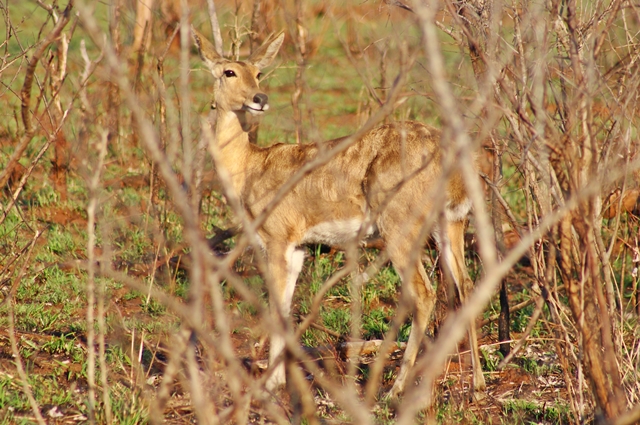
H10, Kruger Park
Female
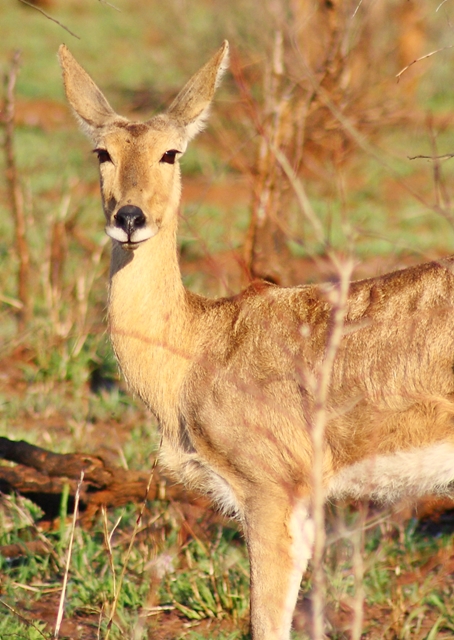
H10, Kruger Park
Southern Reedbucks live in pairs or alone. Sometimes, they form herds consisting of about 20 members. They prefer to lie in grass or reed beds in the heat of the day and feed during sunrise and sunset, or sometimes even at night. Old reedbucks are permanently territorial, with territories around 35-60 hectares, and generally live with a single female, preventing contact with rival males. Females and young males perform an 'appeasement dance' for older males. During the dance, the bucks run around speedily and take considerably long jumps, with the tail curled up and scented air being released from a pocket in the groin at every bounce, making a popping sound.
Their main predators include lions, leopards, cheetahs, spotted hyenas, Cape hunting dogs, pythons, and crocodiles. They can camouflage themselves in the grasslands due to their coats, which are almost the same color. If startled or attacked, they stand still, then either hide or flee with an odd rocking-horse movement, and cautiously look back to ensure the danger is gone. They use vocalizations like a shrill whistle through their nostrils and a clicking noise to alert others about danger.
As a herbivore, the reedbuck mainly feeds on grasses. It also eats herbs and reeds. It never enters into water, though it inhabits places with water sources. It needs to drink water every few days to several times a day during the dry season.
The Southern Reedbuck breeds almost all the time of the year, although most matings occur during the hot and wet season. Females reach sexual maturity when they are two years old, when they leave their parent’s territory. Males, which reach maturity at a slightly older age, may remain with the family group until their third year. A single young is born per birth after a gestation period of seven to eight months, and remains amongst the dense and tall grass cover in which it was born for the next two months. The female does not stay with her young, but instead visits it for just 10 to 30 minutes each day to nurse it.
Southern Reedbucks have a wide distribution, stretching from Gabon and Tanzania to South Africa. Their range seems to extend to the Miombo woodlands in the north. They inhabit moist grasslands with tall grass, reeds, sufficient cover, and water nearby, such as floodplains, pastures, woodlands, and valleys.
It is native to Angola, Botswana, the Republic of the Congo, the Democratic Republic of the Congo, Gabon, Malawi, Mozambique, Namibia, South Africa, Swaziland, Tanzania, Zambia, and Zimbabwe. It also occurs in protected areas and areas with low to moderate levels of settlement, including significant populations on private land in Zimbabwe, South Africa, and Namibia. In the Republic of Congo, it formerly occurred locally in the savannahs of southern Congo, but it is probably extinct there by now. Its presence is doubted in Lesotho. Major populations occur in areas such as Selous National Park (Tanzania), Kafue National Park (Zambia), Nyika National Park (Malawi), Gorongosa National Park (Mozambique), Okavango National Park (Botswana) and Kruger National Park and Eastern Shores (South Africa).
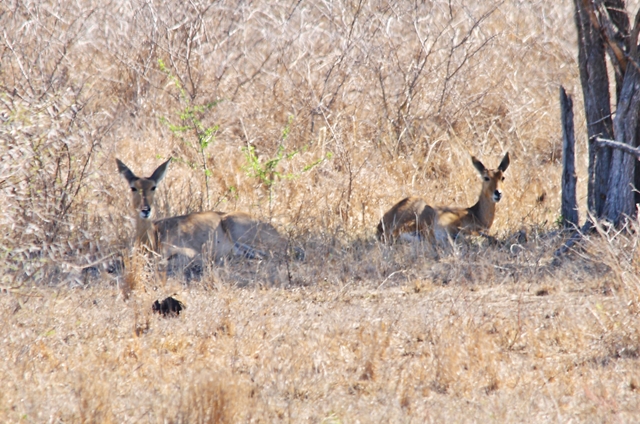
H1-4, Kruger Park
Source: Wikipedia
Southern reedbuck, Redunca arundinum
Mountain reedbuck, Redunca fulvorufula
Bohor reedbuck, Redunca redunca
The Southern Reedbuck, Rietbok or Common Reedbuck (Redunca arundinum) is a diurnal antelope typically found in southern Africa. It was first described by Pieter Boddaert, a Dutch physician and naturalist, in 1785.
The Southern Reedbuck is larger than the other species in Redunca. It stands 80–90 cm (31–35 in) at the shoulder. Females weigh 48 kg (106 lb), while the males weigh 68 kg (150 lb). It has distinctive dark lines running down the front of each of its forelegs and lower hindlegs and whitish rings around the eyes. It has a lifespan of 10 years.
The coat is silky and almost woolly. The color of its coat ranges between light- and greyish-brown, and may be lighter on the neck and chest. A small, black, bare glandular patch can be noticed at the base of each ear. White fur covers the underparts and the areas near the lips and chin. The tail is white underside, and appears short and bushy. Females lack horns. Males bear forward-curving horns, about 35–45 cm (14–18 in) long, with the base having a distinct band of pale, rubbery tissue.
Female

H10, Kruger Park
Female

H10, Kruger Park
Southern Reedbucks live in pairs or alone. Sometimes, they form herds consisting of about 20 members. They prefer to lie in grass or reed beds in the heat of the day and feed during sunrise and sunset, or sometimes even at night. Old reedbucks are permanently territorial, with territories around 35-60 hectares, and generally live with a single female, preventing contact with rival males. Females and young males perform an 'appeasement dance' for older males. During the dance, the bucks run around speedily and take considerably long jumps, with the tail curled up and scented air being released from a pocket in the groin at every bounce, making a popping sound.
Their main predators include lions, leopards, cheetahs, spotted hyenas, Cape hunting dogs, pythons, and crocodiles. They can camouflage themselves in the grasslands due to their coats, which are almost the same color. If startled or attacked, they stand still, then either hide or flee with an odd rocking-horse movement, and cautiously look back to ensure the danger is gone. They use vocalizations like a shrill whistle through their nostrils and a clicking noise to alert others about danger.
As a herbivore, the reedbuck mainly feeds on grasses. It also eats herbs and reeds. It never enters into water, though it inhabits places with water sources. It needs to drink water every few days to several times a day during the dry season.
The Southern Reedbuck breeds almost all the time of the year, although most matings occur during the hot and wet season. Females reach sexual maturity when they are two years old, when they leave their parent’s territory. Males, which reach maturity at a slightly older age, may remain with the family group until their third year. A single young is born per birth after a gestation period of seven to eight months, and remains amongst the dense and tall grass cover in which it was born for the next two months. The female does not stay with her young, but instead visits it for just 10 to 30 minutes each day to nurse it.
Southern Reedbucks have a wide distribution, stretching from Gabon and Tanzania to South Africa. Their range seems to extend to the Miombo woodlands in the north. They inhabit moist grasslands with tall grass, reeds, sufficient cover, and water nearby, such as floodplains, pastures, woodlands, and valleys.
It is native to Angola, Botswana, the Republic of the Congo, the Democratic Republic of the Congo, Gabon, Malawi, Mozambique, Namibia, South Africa, Swaziland, Tanzania, Zambia, and Zimbabwe. It also occurs in protected areas and areas with low to moderate levels of settlement, including significant populations on private land in Zimbabwe, South Africa, and Namibia. In the Republic of Congo, it formerly occurred locally in the savannahs of southern Congo, but it is probably extinct there by now. Its presence is doubted in Lesotho. Major populations occur in areas such as Selous National Park (Tanzania), Kafue National Park (Zambia), Nyika National Park (Malawi), Gorongosa National Park (Mozambique), Okavango National Park (Botswana) and Kruger National Park and Eastern Shores (South Africa).

H1-4, Kruger Park
Source: Wikipedia
- Flutterby
- Posts: 44150
- Joined: Sat May 19, 2012 12:28 pm
- Country: South Africa
- Location: Gauteng, South Africa
- Contact:
Re: Reedbuck
The Mountain Reedbuck (Redunca fulvorufula) is found in mountainous areas of much of sub-Saharan Africa.
There are three recognized subspecies.
R. f. adamauae - Adamawa mountain reedbuck
R. f. chanleri - Chanler's mountain reedbuck (named for William A. Chanler)
R. f. fulvorufula - southern mountain reedbuck
The Mountain Reedbuck averages 75 cm (30 in) at the shoulder, and weighs around 30 kg (66 lb). It has a grey coat with a white underbelly and reddish-brown head and shoulders. The male has ridged horns of around 35 cm (14 in), which curve forwards. Both sexes have a dark scent patch beneath the ears.
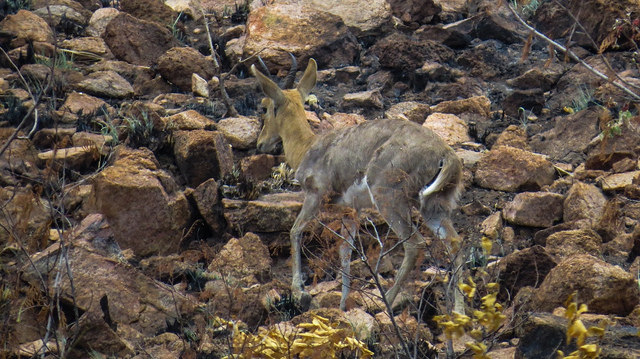 ©steamtrainfan
©steamtrainfan
Pilanesberg
Male
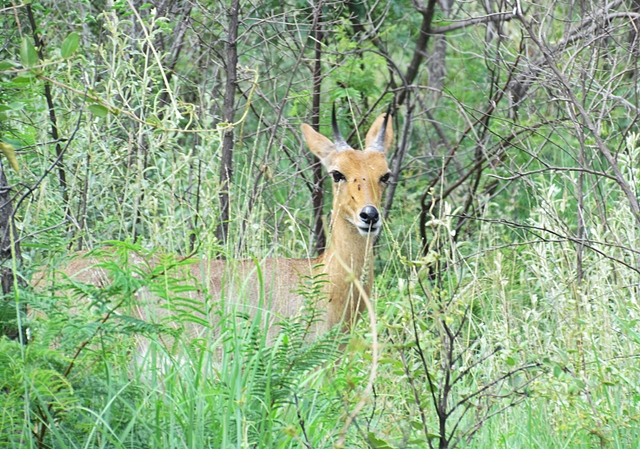 ©Flutterby
©Flutterby
Pilanesberg
The Mountain Reedbuck occurs in three separate geographic areas, each containing a separate subspecies. The Southern Mountain Reedbuck inhabits an area from the eastern Cape Province (South Africa) to southeastern Botswana. Chanler's Mountain Reedbuck occurs in Tanzania, Kenya, Uganda, Sudan, and Ethiopia. The Adamawa Mountain Reedbuck has only been found in Cameroon. The species occupies ridges and hillsides in rocky country and high-altitude grasslands (often with some tree or bush cover), at altitudes of 1,500-5,000 m. Current total population of all subspecies has been estimated at some 36,000 individuals.
Mountain Reedbucks are predominantly grazers, and water is an important habitat requirement. They tend to feed in the early evening and morning hours, normally in small groups of six or fewer animals. A typical group is made up of one adult male and several adult females and juveniles. Adolescent males are forced out of their herds and form small bachelor herds. Lifespan in the wild is unknown, but specimens of related species in captivity have been recorded to live up to 18 years.
The Mountain Reedbuck is subject to some pressure from hunting and human encroachment on its habitat, but current populations appear stable, and the species is classified as Least concern by the IUCN.
Source: Wikipedia
There are three recognized subspecies.
R. f. adamauae - Adamawa mountain reedbuck
R. f. chanleri - Chanler's mountain reedbuck (named for William A. Chanler)
R. f. fulvorufula - southern mountain reedbuck
The Mountain Reedbuck averages 75 cm (30 in) at the shoulder, and weighs around 30 kg (66 lb). It has a grey coat with a white underbelly and reddish-brown head and shoulders. The male has ridged horns of around 35 cm (14 in), which curve forwards. Both sexes have a dark scent patch beneath the ears.
 ©steamtrainfan
©steamtrainfanPilanesberg
Male
 ©Flutterby
©FlutterbyPilanesberg
The Mountain Reedbuck occurs in three separate geographic areas, each containing a separate subspecies. The Southern Mountain Reedbuck inhabits an area from the eastern Cape Province (South Africa) to southeastern Botswana. Chanler's Mountain Reedbuck occurs in Tanzania, Kenya, Uganda, Sudan, and Ethiopia. The Adamawa Mountain Reedbuck has only been found in Cameroon. The species occupies ridges and hillsides in rocky country and high-altitude grasslands (often with some tree or bush cover), at altitudes of 1,500-5,000 m. Current total population of all subspecies has been estimated at some 36,000 individuals.
Mountain Reedbucks are predominantly grazers, and water is an important habitat requirement. They tend to feed in the early evening and morning hours, normally in small groups of six or fewer animals. A typical group is made up of one adult male and several adult females and juveniles. Adolescent males are forced out of their herds and form small bachelor herds. Lifespan in the wild is unknown, but specimens of related species in captivity have been recorded to live up to 18 years.
The Mountain Reedbuck is subject to some pressure from hunting and human encroachment on its habitat, but current populations appear stable, and the species is classified as Least concern by the IUCN.
Source: Wikipedia
- Richprins
- Committee Member
- Posts: 75967
- Joined: Sat May 19, 2012 3:52 pm
- Location: NELSPRUIT
- Contact:
Re: Reedbuck
Thanks, Wikiby! Nice pics!
Please check Needs Attention pre-booking: https://africawild-forum.com/viewtopic.php?f=322&t=596
Re: Reedbuck
Great info & pics here. Thanks for posting all. 
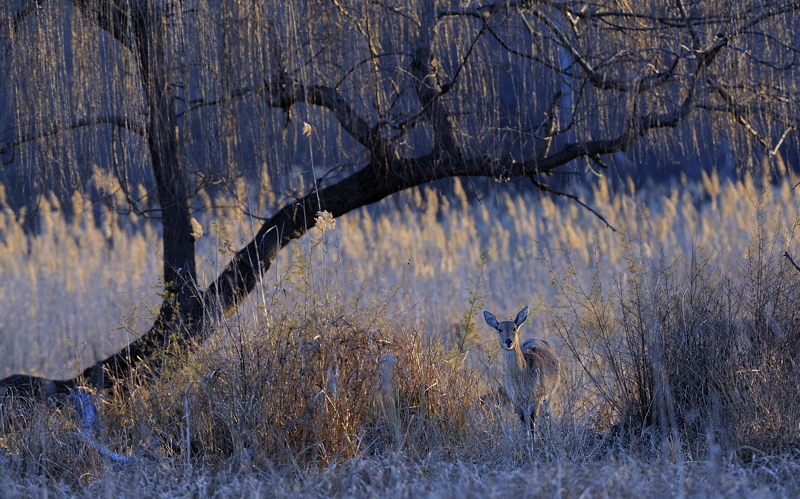
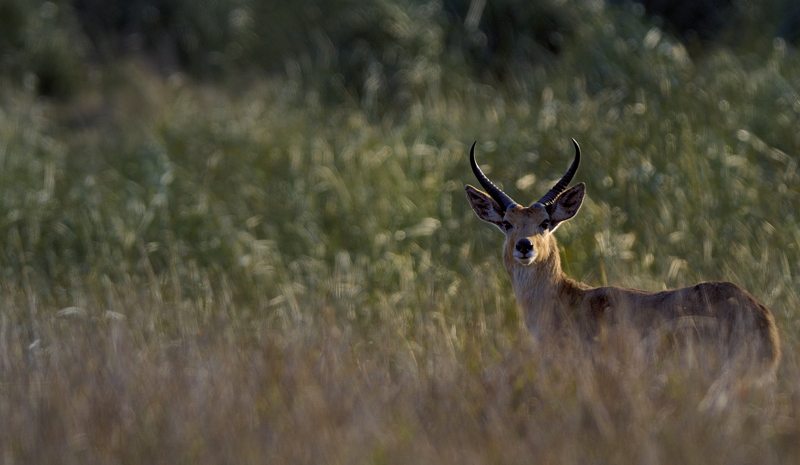
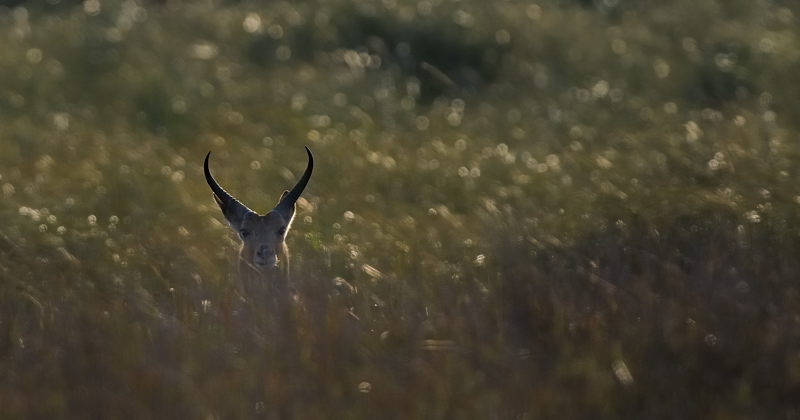



Dewi
What is the good of having a nice house without a decent planet to put it on? (H D Thoreau)
What is the good of having a nice house without a decent planet to put it on? (H D Thoreau)
- Lisbeth
- Site Admin
- Posts: 67391
- Joined: Sat May 19, 2012 12:31 pm
- Country: Switzerland
- Location: Lugano
- Contact:
Re: Reedbuck
Lovely pics, Dewi 

Have you done "something" to the first photo? It looks kind of magic
It looks kind of magic 
Have you done "something" to the first photo?
"Education is the most powerful weapon which you can use to change the world." Nelson Mandela
The desire for equality must never exceed the demands of knowledge
The desire for equality must never exceed the demands of knowledge
- Richprins
- Committee Member
- Posts: 75967
- Joined: Sat May 19, 2012 3:52 pm
- Location: NELSPRUIT
- Contact:
Re: Reedbuck
Where exactly were these, Deli? 
Please check Needs Attention pre-booking: https://africawild-forum.com/viewtopic.php?f=322&t=596
Re: Reedbuck
First one in Rietvlei, the second & third in Tembe RP. 
Nothing special done to the pic Lis. Corrected the black & white points, cropped the mass of grass that was in the bottom of the pic and some slight sharpening.
Nothing special done to the pic Lis. Corrected the black & white points, cropped the mass of grass that was in the bottom of the pic and some slight sharpening.
Dewi
What is the good of having a nice house without a decent planet to put it on? (H D Thoreau)
What is the good of having a nice house without a decent planet to put it on? (H D Thoreau)


